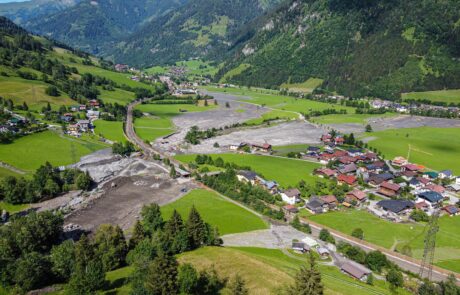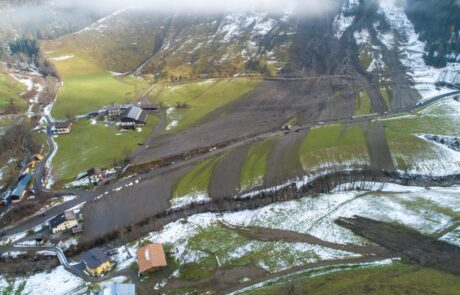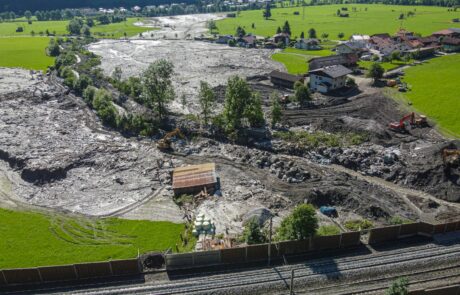Caretaker for Natural Hazards: “Climate Adaptation and Natural Hazard Management – Joining forces across borders for a climate-resilient future”
Wolfgang Lexer (Environment Agency Austria) is the Alpine Climate Board’s Caretaker for Natural Hazards. This month, he talks about his relations to the topic and the added challenges caused by climate change. He receives invaluable support from Katharina Rieder (BMLRT, PLANALP and EUSALP AG8).
What is your motivation for your role as Caretaker for Natural Hazards?
I have been working in the field of climate adaptation for more than 15 years now. No matter what area you may be dealing with as an adaptation expert – be it spatial planning, tourism or water management – in the Alps you quickly come across challenges posed by increasing risks from natural hazards. They are part of climate change driven impact chains that affect basically all of these sectors. It is common knowledge that changing climatic conditions and extreme weather events exacerbate natural hazard processes, such as debris flows, landslides, rockfalls or floods, and will increase the frequency, magnitude, and spatial scale of hazard events in many places. Combined with the growing land-use demands and the ongoing expansion of settlement areas, this results in increasing risk levels to society, economic activities, and our living environment. In other words, achieving climate resilience in the Alpine region is not possible without upscaling efforts for risk prevention. As neither climate change nor natural hazards stop at national or regional borders, risk management requires transboundary cooperation. Thus, as an adaptation expert with a lot of experience in working in transnational contexts, supporting the implementation of the natural hazard pathways of the Alpine Climate Action Plan 2.0 came quite naturally to me.
Where do you see the biggest need for change in dealing with natural hazards in the Alps in the coming decades?
Firstly, in the increasing spatial overlap between expanding hazard zones on the one hand, and continuous growing land demand from settlement activities on the other. This implies that preventive spatial planning will need to play a much stronger role in limiting climate-driven increase of risk.
Secondly, there is now scientific evidence that climate change has already increased large-scale weather extremes of unprecedented magnitude, and will continue to do so. The direct effects of such extreme weather events, like storms or heavy precipitation, can trigger natural disasters that exceed current risk management capacities and cause knock-on and spill-over effects (power outages, disruption of transport connections, loss of accessibility of regions, destruction of critical infrastructure, etc.) across the entire socio-economic system. This challenges existing protection concepts, risk assessment methods, and prevention measures, and it calls for more systematic consideration of future climate change in natural hazard management.
Finally, strengthening cooperation between climate adaptation and disaster risk reduction, as is called upon by strategies at the UN and EU level, is an ongoing, but by no means a straightforward task. Both policy fields share similarities but above all, they share the common goal of reducing vulnerability and increasing resilience. There remain some differences, however, for example in terms of the policy frameworks, actor communities, institutional responsibilities, methodologies, or spatial and temporal scales that are considered. Coordination and coherence are improving, yet, as illustrated by the cartoon below, it is still a rather timid relationship with a lot of development potential.
How do you cooperate with other transnational actors?
We have a well-established cooperation and regularly exchange information with other transalpine working bodies, especially with PLANALP, the Natural Hazard Working Group of the Alpine Convention, and with EUSALP Action Group 8 on ‘Risk Governance’. Both support the natural hazard targets of the Climate Action Plan 2.0 in their activities and they facilitate contacts with other actors, projects, and initiatives. I would like to give special mention to Katharina Rieder from the Austrian Ministry of Agriculture, Tourism and Regions (BMLRT), who is part of the chair team in both groups and who is my co-caretaker for natural hazards.







